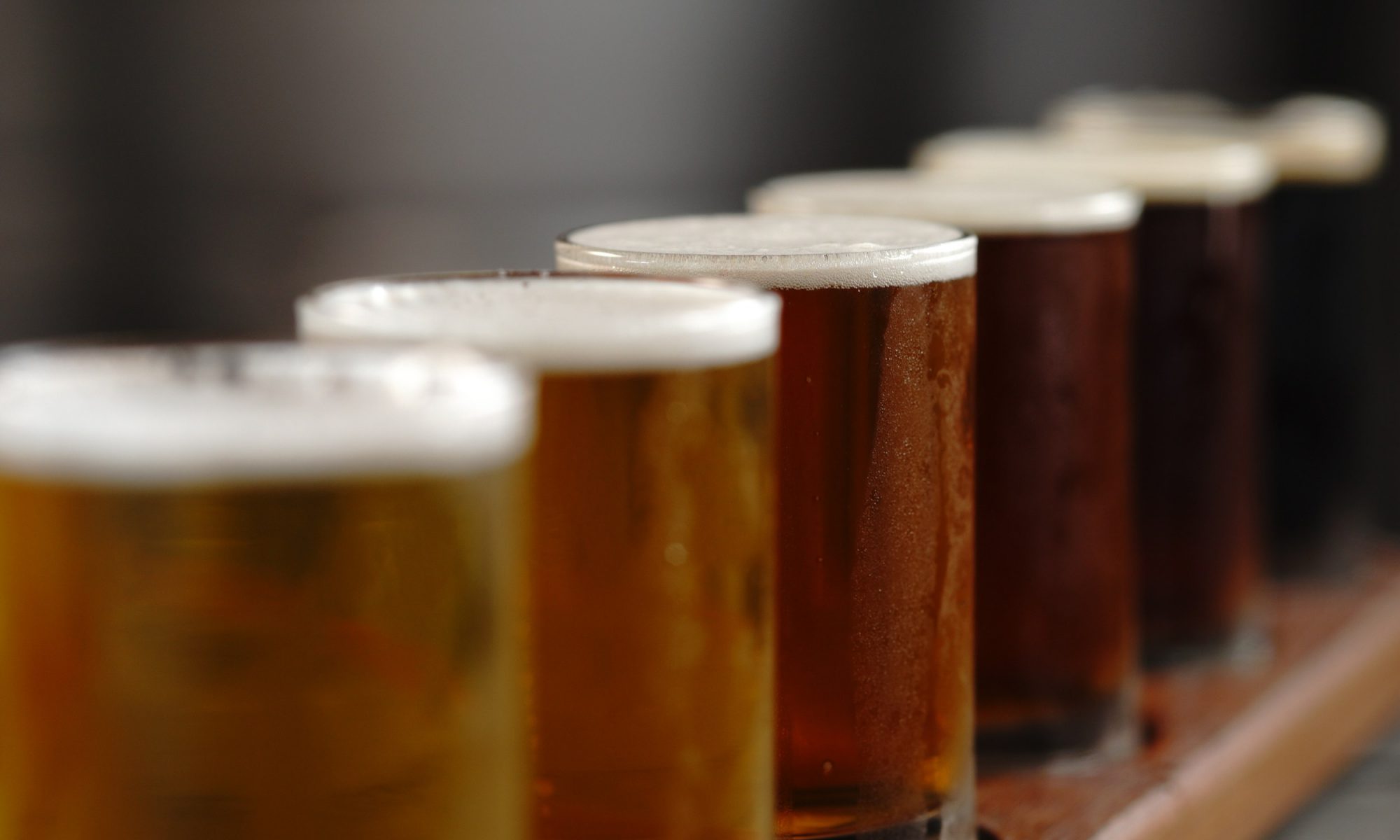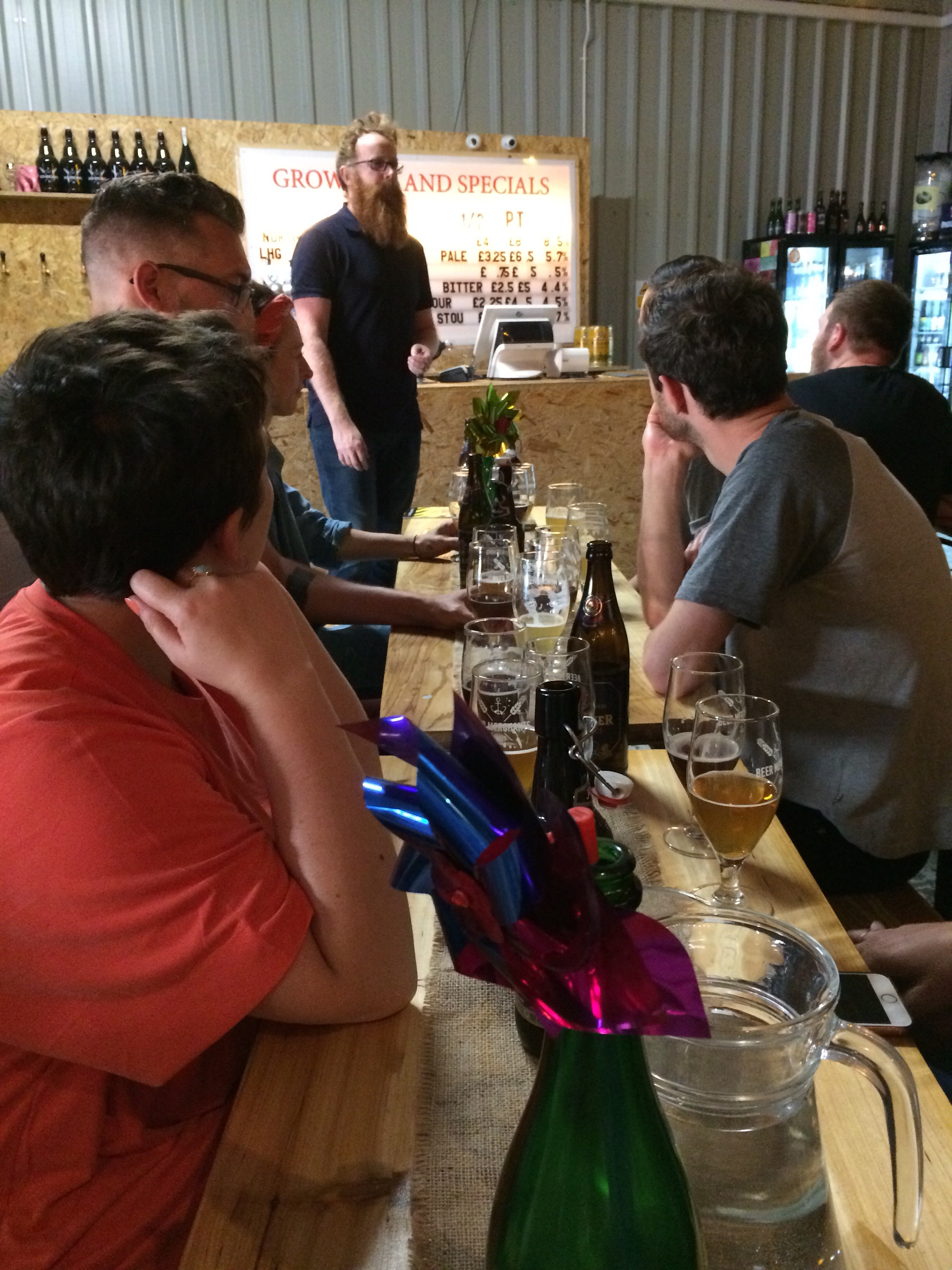Last year we somehow totally missed all the hype for Manchester Beer Week and did not see the programme until it was too late. This year we made sure we were organised. So organised we managed to book tickets to look around the Heineken Brewery in Hulme, a well known landmark just south of the city centre. There are only 4 tours of 10 people each happening so we very fairly privileged. This is one of the biggest breweries in Europe and the biggest in the UK. They have 2 other smaller sites in the UK – Caledonia and Tadcaster.
All the staff we met were lovely. Just the day before we had commented that we were unlikely to meet any brewers on this tour, a chemical engineer seemed more likely. Sure enough two graduate chemical engineers who are on the graduate programme guided us around. Actually – we did meet some brewers , a bunch of staff from Cloudwater (recently voted 2nd best brewery in the UK) were on our tour, along with a girl from Beavertown who have just sold a huge chunk of their business to Heineken.
Health and saftety is a big thing – we all had to go through basic security, an induction, wear high vis orange vests and stick to the designated footpaths around the site.
We saw where the ingredients are delivered to big sylos – grain and syrup. The mashing room – two 30m+ long vats with mesh ‘presses’ through which the grain is squeezed (not like our gentle mash tun). Efficiency is apparently better than 100% – something to do with the way the maths works and the standard calculation being wrong (?). Below the mashers the spent grains get collected and like most brewers they sell this on to pig farmers.
We were not able to visit the bolier/copper room – too hot apparently. It was at least 26+C degrees outside in the ‘fresh’ air.
Next we saw the fermenters, from the bottom first. Approximately 15 of them. Each holding 436,000 litres – which you only really start to appreciate once you go outside again, walk across site a bit and look back at them towering into the sky. The yeast is circulated frequently in them. We are curious though about how much they weigh (a few hundred tons) and the amount of pressure at the bottom. Also, we presume they are jacketed and temperature controllable given most of the vessel is exposed to the outside.
On to the filtration room – lots and lots of pipework and large chillers. Some adjuncts can be added at this point. The beer then passes into maturation tanks for about a week.
Packaging – the keg line is very hot and noisy. Kegs come in, get checked for residual beer, washed, refilled. Two canning lines, one of which can fill 1500 cans a minute – how nice it would be if we could do our 40 bottles per batch at hat speed. We also saw the palletiser which stacks the shrink wrapped beers onto pallets and then shrink wraps all of that. Lorry bay close by to take them off to a warehouse where they then get distributed from.
The whole thing appears to be automated and sealed end to end. They have approximately 250 staff and the site operates 24/7 in a shift pattern.
The final bit of the tour was to see their pilot kit. This does not get used to design new recipes – the site does Fosters and Kronenburg most of the time – but is rather a means of staff engagement so they have some appreciation of how the product is made and what it is (yes, I did giggle while writing that). It is very small, smaller than most micro-breweries we know, and every couple of weeks some of the staff who’ve performed well, been there a few years etc get to spend a day brewing. The beer once bottled is then distributed to the on-site staff.
There was no consumption of alcohol on the premises. We went away with a goody bag of 2 cans of beer, 2 glasses, a couple of bottle openers and some beer mats.

